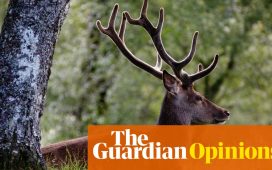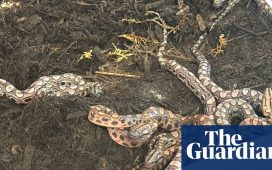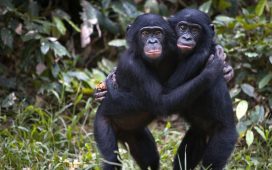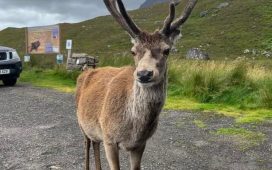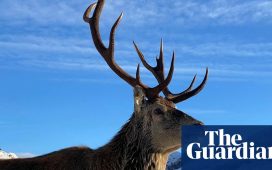The oak timbers of HMS Victory have played an unexpected role in ensuring a scientific research triumph for Great Britain. A deathwatch beetle – taken from an infected beam on Nelson’s great warship – has been used to create the first fully sequenced genome of the species.
The project, carried out by scientists at the Sanger Institute and Oxford University and by National Museum of the Royal Navy conservationists, has made a key breakthrough, say researchers.
The beetle, Xestobium rufovillosum, still causes major damage to buildings and boats and also affects hardwood trade in many countries.
By unravelling the beetle’s genetic blueprint and pinpointing the 476m units of DNA that make up its genome, scientists have taken a major step in finding new ways to combat deathwatch desecration.
“By sequencing all the beetle’s DNA, we are now much better equipped to find ways of tackling the damage it causes,” said Prof Mark Blaxter, of the Sanger Institute, where the genome was sequenced.
The Sanger’s involvement with the deathwatch is part of its Tree of Life initiative, which involves scientists working with a global network of other genetics projects in order to sequence the genomes for every known species on Earth.
The aim is to produce an evolutionary history of genes and species for the entire planet.
“The deathwatch is the latest of the 150 beetle species whose genomes we have already sequenced,” added Blaxter.
“None came from samples with the historic associations of the deathwatch, however.”
The deathwatch beetle gets its name from the tapping sound it makes when trying to attract a mate. In the past, people living in old houses, keeping vigil by the sickbeds of relatives, believed the sound to be a harbinger of death, hence the name.
As Mark Twain wrote in The Adventures of Tom Sawyer: “Next the ghastly ticking of a deathwatch in the wall at the bed’s head made Tom shudder – it meant that somebody’s days were numbered.”
The deathwatch beetle wreaks damage from the effects of its larvae, which hatch from eggs it lays in wood. The species is particularly fond of old oak that is slightly softened by damp and fungus, and larvae can gnaw away at wood for up to 10 years before emerging as adults.
In this way, the deathwatch beetle can eat and hollow out beams, weakening whole structures and leading to building collapses – as nearly happened in Westminster Hall in 1913.
Old sailing vessels are also affected, including HMS Victory, the world’s oldest naval vessel still in commission.
The Victory was launched in 1765 and is best known for its role as Nelson’s flagship at the Battle of Trafalgar in 1805. It was kept afloat until 1922, when it was moved to a dry dock in Portsmouth and preserved as a museum ship.
It was at around this time that the first evidence of deathwatch infestation was observed, said Diana Davis, head of conservation at the National Museum of the Royal Navy in Portsmouth.
“For almost 100 years, the deathwatch beetle has been responsible for the continued loss of a great deal of historic timber on the Victory,” Davis added.
after newsletter promotion
“It is something we take very seriously, so this sequencing work is a very important development.
“For example, we do not know if the Victory was the victim of a single infestation of deathwatch beetle or the subject of several waves of attack. Now that we have its sequence, we have a way to answer this question. It is very exciting.”
Blaxter added that it is also possible that beetles adopt genes from other organisms, such as fungi, and these could help them to soften and digest wood.
“By sequencing the deathwatch’s genome, we will be able to spot what gene transfers may be helping the beetle’s larvae eat wood,” he said.
“Such a discovery could have considerable benefits not just in helping to combat the deathwatch beetle but also in finding ways to digest wood and boost biogas production.”
Isolating deathwatch specimens from the Victory involved museum staff capturing insects emerging from holes in its timbers.
“Each time they got one, they phoned me and headed north,” said zoologist Prof Peter Holland of Oxford University, a key member of the project.
“I would then head south, and we would meet at a roadside cafe midway between Oxford and Portsmouth on the A34. They would have a beetle in a plastic cup, and I would take it back to our laboratory. Eventually we got a perfect specimen which we passed on to the Sanger Institute.”
The crucial point about sequencing the beetle’s genome is that it allows scientists to look at every protein that makes up that organism, Holland added.
“There will be enzymes, molecules used in communication with other organisms, receptors – all that sort of biochemistry which become available once you’ve sequenced the genome,” he said.
“You get a completely new understanding of an organism. The conservation applications should then appear a little bit further downstream.”
